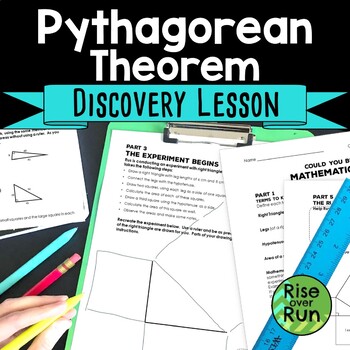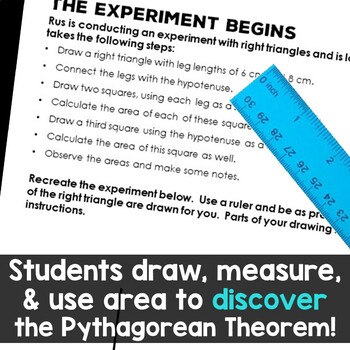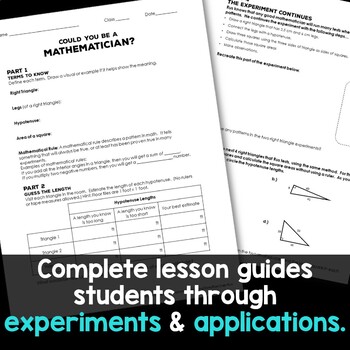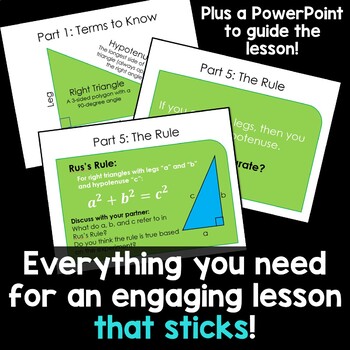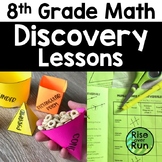Pythagorean Theorem Hands-On Activity Discovery Lesson
- Zip
What educators are saying
Also included in
- Do you want to get your students exploring, thinking, and figuring out math topics without you having to tell them everything? These inquiry activities allow students to discover math concepts for themselves!Included are 8 activities you can sprinkle throughout your year! Create engaging and memorabPrice $18.00Original Price $28.00Save $10.00
- Looking for engaging, discovery, hands-on lessons for teaching you eighth graders geometry standards? This bundle resources includes discovery lessons, group activities, digital tests in Google Forms, and fun practice to help you provide meaningful and memorable lessons.Topics include:Pythagorean TPrice $65.00Original Price $101.24Save $36.24
- If you enjoy teaching students using discovery learning and engaging activities with real world connections, this huge pack of resources is here to help you plan your entire year of 8th grade math.Lessons help you teach the standards, encourage discussions, and challenge students to think. StudentsPrice $225.00Original Price $386.46Save $161.46
- Do you love discovery learning, collaboration, hands-on activities, and projects that help students make sense of the math they are learning? This curriculum is packed with engaging and challenging Algebra I and 8th grade math resources for the whole year. A variety of activities, inquiry learningPrice $350.00Original Price $677.94Save $327.94
- Ready for an engaging unit that will get your students thinking? This pack includes engaging lessons and challenging activities to help students discover the Pythagorean Theorem, find distances on the coordinate plane, and apply the formula to real world problems involving 2D and 3D figures. IncludPrice $16.00Original Price $24.50Save $8.50
Description
In this inquiry lesson, students draw, measure, and use area models to discover the Pythagorean Theorem for themselves.
Students play the role of real mathematicians, finding patterns and discovering a mathematical rule. This activity has helped my own students understand the concept and remember the formula.
In this lesson pack, you will receive:
• 4 pages of student friendly handouts outlining important terms, guiding students through an experiment with right triangles, and giving students practice (PDF and word doc)
• Lesson Guide for the teacher (PDF)
• Answer key for handouts (PDF)
• PowerPoint highlighting key points of the lesson (PPT)
I love discovery learning, and I hope this lesson will be as successful for your students as it has been for mine. Here is what other teachers are saying...
"Fantastic lesson. Students were engaged and I was very impressed by their observations."
"Highly interactive, easy to follow, and engages students."
Thank you for your interest in this product by Rise over Run. Reviews are greatly appreciated!
Common Core Standards:
CCSS.Math.Content.8.G.B.6
Explain a proof of the Pythagorean Theorem and its converse.
CCSS.Math.Content.8.G.B.7
Apply the Pythagorean Theorem to determine unknown side lengths in right triangles in real-world and mathematical problems in two and three dimensions.

